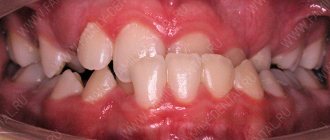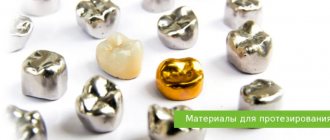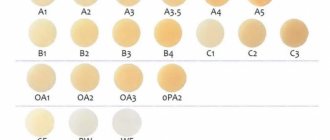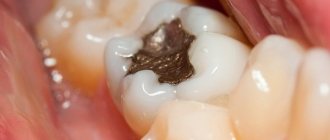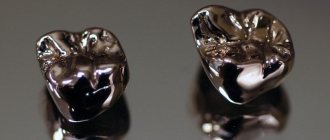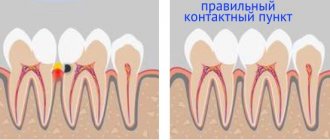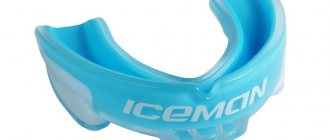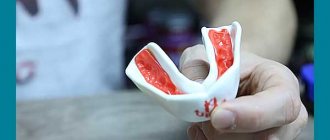Filling is a common treatment method used when there is a cavity or when there are pieces of enamel or dentin that have chipped away from a tooth. During this process, different types of fillings can be used, so you shouldn’t be surprised when the dentist asks the question - What kind of filling will we put in? Types of dental fillings differ in their composition, structure, hardening speed and, of course, strength. Therefore, before rushing to install this or that material, you should think it over carefully and choose the most suitable one.
What is
Probably every person at least once in his life has had to resort to treatment and installation of a filling on a tooth. But rarely does anyone think about what material these products are made of, as well as what types of fillings exist currently. But in vain, knowledge of these features will help you choose the most suitable filling that will last a long time, and sometimes it can completely imitate dental tissue. In addition, it is worth considering that the process of installing a filling is a rather labor-intensive process that requires increased professionalism from the doctor so that the material lasts a long time and does not fall out of the tooth a few days after installation.
Black carious formations provoke pulpitis (nerve inflammation), this occurs as a result of infection entering the tooth cavity where the neurovascular bundle is located. But inflammation of the nerve in the tooth does not develop immediately, but only when the carious cavity becomes deep enough.
In the dental field, a filling is understood as a special material that has high viscosity, but at the same time it hardens quite quickly. Using this material, the doctor fills the area of the tooth that has been cleared of caries or pulpitis. In addition to filling holes, this material is often used to hide damaged enamel or other defects. But it is worth remembering that the more reliable the structure of the filling, the better the tooth will perform its natural functions. Nowadays there is a wide variety of materials that are used for filling teeth. Dentists use metal, plastic, and ceramic bases as fillings; fillings made from different types of cement are also often used. In addition, they are divided into temporary and permanent fillings.
Advantages of filling at OneDent
- Specialists with more than 10 years of experience.
- High level of aesthetics: fillings installed in our clinic do not stand out in the dentition.
- Durable materials: restorations last more than 7 years (with proper care).
- Perfect fit and minimal shrinkage - no caries forms at the interface between the material and dental tissues.
- Affordable cost of services, options for any budget.
Installation example "Before and After"
Types of fillings by service life
If we consider fillings according to their service life, they are divided into temporary and permanent. Permanent products include products that are designed for a long service life. The process of installing this type of filling usually takes a long time. In addition, the base chosen for permanent filling must have high strength, have high aesthetic qualities and meet all safety requirements. But temporary fillings are used only for treatment and are usually installed for a short period of time. Most often, these products are based on various medicinal additives.
Temporary
Temporary products have a second name - diagnostic. This type of filling is often used to identify the main symptoms that will help identify a specific disease.
A temporary filling is a hardening material that is applied to the part of the tooth affected by caries. It is installed for further treatment of caries, canal or pulpitis, after removal of the tooth nerve.
For example, during caries, not only damage to the enamel structure can be observed, but also to deeper dentin layers, and sometimes even to the pulp of the tooth. If, after the material is installed in the tooth cavity, the patient experiences pain, this will indicate that he has the development of pulpitis. As a result, it is necessary to remove the affected soft tissue. In addition, during pulpitis, a temporary filling acts as a sealing agent; it prevents medication from entering the tooth cavity.
What characteristics should it have?
Temporary fillings must have important characteristics that meet all requirements. These qualities include the following features:
- Reliable degree of tightness and stability of the drug during its application to the area under the filling;
- Simple introduction and removal of the substance;
- It is important that allergic reactions and irritations do not occur upon contact with the tooth, soft tissues, or mucous layer of the oral cavity;
- The filling mass must have a rapid degree of hardening.
Permanent
Permanent fillings differ in many ways from temporary fillings. First of all, this type of filling is used for completely different purposes, therefore, the quality of the base for these products has significant differences.
A filling is a necessary measure; it serves to isolate sensitive tooth tissues and prevent microbes from entering the resulting cavity.
Permanent filling is used for permanent wear. In addition, it has various purposes:
- In most cases, permanent products are used to thoroughly and hermetically seal the tooth hole that appeared as a result of cured caries or depulpation. At the same time, the material must protect the tooth from penetration of pathogenic bacteria into its cavity;
- It is used to provide the tooth structure with natural qualities. Depending on this, the type of material with which you can later bite and chew food is selected;
- Another final purpose of permanent products is aesthetic functions. If, for example, various types of cement material are used for chewing teeth, which are invisible from the front of the dentition, then a light filling is usually used for the front teeth. At the same time, it is carefully selected to match the natural color of the dental tissue, so that there are no visible differences in the future.
Advantages of fillings based on acrylic or epoxy resin
And yet, this type of material still has a place in modern practice. Which is explained by strong arguments in their favor. The first advantage of the plastic composition is the price: it is minimal and practically does not change over the years.
The second point is ease of use. Such a filling is easy and quick to prepare, it is convenient to apply, and it takes minimal time to treat with plastics.
Thirdly, it is a fairly strong base, smooth and light. This filling is practically not felt. Plus, they lend themselves well to polishing and leveling - you can “cut out” a surface relief that is as close as possible to the structure of the tooth.
The plastic component of the seal has never been in short supply. It comes in a wide range of colors. You can choose a shade close to the color of the surviving tooth walls. However, over time this advantage is leveled out due to the rapid coloring of plastics.
Types of fillings according to materials used
Depending on the material, fillings may vary. Today, there are a large number of types of filling material, which differ in composition, strength, consistency and hardening speed. In addition, a huge variety of fillings allows you to match them to the color of your tooth enamel, which ultimately allows you to return the tooth structure to its original appearance.
Cement based
This type of filling is quite common in dentistry, this is due to the high degree of sticking or adhesion of the cement material. Cement elements have high strength and wear resistance, which can last for a long period.
Cement fillings are a combination of powder and liquid. They are short-lived due to the fragility of the material, but they counteract the formation of repeated caries.
However, this material has one negative quality - cement fillings have a higher density compared to the density of dental tissue. For this reason, after a certain time, wear and tear of the tooth tissue located around the filling is observed. As a result, a vulnerable area is formed along the edges of the filling material, which leads to the appearance of secondary caries. Several types of compositions are used for cement fillings:
- Phosphate cements. The composition of this material includes almost 90% zinc oxide, as well as magnesium oxide, silica, orthophosphoric acid;
- Mixtures with silicate-containing structure. The composition of these mixtures includes aluminosilicates and phosphoric acid.
It is worth noting that phosphate cement fillings are not used for surface work. They are mainly used to seal canals, placed in the area under the crowns, as well as under the top layer.
But silicate cements are similar in structure and color to bone tissue. This material has a shiny surface and is transparent. The structure of this material is quite hard and it is suitable for filling the anterior dentition. Silicate material is not used for deep fillings because it has a negative effect on the pulp area.
Plastic
Plastic fillings are quite popular in dentistry. This is due to their positive qualities:
- Fast degree of hardening;
- They have a high degree of hardness;
- They have increased strength characteristics;
- The composition of the material is chemically resistant;
- The base of the plastic material does not irritate the tissues of the oral cavity.
Carbondent is the basis for the manufacture of plastic fillings. Dentists rarely use this type of fillings, as they are toxic and not strong enough.
However, this material has one significant negative factor - over time, plastic fillings sag and decrease in size. After a certain period, a person may notice that the filling becomes smaller over time. This all leads to the gradual destruction of dental tissue. In addition, plastic materials become stained over time and quickly lose their original color. Plastic products can be based on two components - acrylic oxide and carbondent.
Important! Plastics containing acrylic oxide have increased strength, but they have several disadvantages. They have increased chemical toxicity and after a certain period cause an inflammatory process in the area under the filling.
Products made from carbondent have a porous structure, and they also have a low degree of toxicity. However, this material has low strength and after a certain period the filling becomes darker than the tooth.
Amalgam
Amalgam filling material has increased quality and durability. This is due to the basis of these products. It is based on an alloy of mercury and metals.
Amalgam filling used to be very popular, but various metal alloys are now practically not used, as they have disadvantages: high thermal conductivity, low aesthetic effect.
Attention! The composition of amalgam products can include different types of metals and alloys - silver, mercury, zinc, gold, tin. The base of these products has increased ductility and good adhesion.
The strength of this type of material is quite high; the products can last for several decades. The only negative quality of amalgam fillings is that they have a characteristic metallic color. For this reason, they are used for inconspicuous places.
Ceramics
Fillings made of ceramic material have a number of advantages:
- High hardness and strength;
- Increased wear resistance;
- Do not shrink over time;
- There is no color change over time. Ceramic fillings do not darken, and various stains do not appear on them.
Ceramics are closest in their properties to tooth enamel: strength, color, light reflection. Ceramic inlays are installed where large dental cavities are damaged by caries, but the pulp has not been removed.
A ceramic filling is made in the form of an inlay based on an impression of a disinfected, treated tooth. Due to the fact that the masonry is a similar copy of the tooth structure, during installation the entire load during chewing is evenly distributed. In addition, it adheres quite firmly to the tooth.
Light-curing composites
Filling products that are made from light-hardening composites also have a second name: light. The process of polymerization reactions in the elements that are present in such filling products is carried out as a result of the influence of ultraviolet irradiation. In this case, the healed teeth undergo shrinkage after a certain period. But at first, these materials look just perfect.
Light-curing composites are by far the most modern, beautiful, strong and durable. They have an excellent range of colors that will help you choose the desired color to match the overall color of your teeth.
This type of material is highly polished. Microphiles are used for the anterior molars, while macrophiles are used for the larger posterior molars. A special material that has a self-hardening base, containing silicon and zirconium particles, is used in the process of restoring the surface of chewing units. But for hard-to-reach areas, composites with a fluid structure are used.
Glass ionomer cement material
A group of materials of this type contains a high level of fluoride, which ensures the prevention of recurrent carious lesions. This material is an ideal basis for dental treatment in children.
Glass ionomer cement is an excellent insulating lining under the filling, which perfectly prevents the aggressive effect of the filling material on dentin. Glass ionomer cement is used to restore teeth and fill canals.
But this type of filling material has one drawback - high fragility. Glass ionomer cementitious material can be of two types:
- Self-curing;
- Light-curing.
However, glass ionomer fillings do not always match the natural color of dental tissue. Therefore, after their installation, they often have to be covered with composite materials.
Disadvantages of plastic compounds
The disadvantages of fillings based on acrylic or epoxy resin include:
- shrinkage after hardening;
- the porous structure of the plastic base (it contributes to the development of secondary caries);
- toxicity of the components of the composition, which can cause allergic symptoms or provoke irritation of the pulp (up to pulpitis);
- the plastic base lasts longer than cements, but is still washed out by saliva and is destroyed under mechanical loads faster than composites;
- rapid hardening eliminates the ability to qualitatively distribute the material over the area being closed and ensure a comfortable fit of the edge of the filling to the dental walls;
- plastic material is easily stained - over time, an initially invisible filling acquires a darker shade or yellow color under the influence of dyes and nicotine.
How does the installation work?
In addition to choosing the necessary material for filling a tooth, it is worth knowing the features of installing these products. This process has certain features on which the service life of a particular filling product depends. Features of installing seals:
- First of all, an examination of the diseased tooth is carried out and an accurate diagnosis of the lesion is established, and the area of damage is determined;
- Next, the tooth is treated with special preparations, the cavity and surface of the tooth are cleaned of damaged tissues;
- Typically, during treatment and cleansing, the doctor performs local anesthesia using various anesthetics. The choice of anesthetic depends on the strength of action and on the individual characteristics of the patient’s body;
- During deep lesions, a special pad with calcium is placed, it will speed up the process of relieving the inflammatory process;
- An insulating gasket is placed under the aesthetic part of the filling material, which is made of high-quality materials with a high degree of adhesion;
- The next stage is to install the filling material;
- If material is installed with a light-hardening base, then each layer of the filling product shines.
This photo shows a tooth at the moment of carious destruction, and also shows the final result of treatment. The doctor performed an examination, anesthesia, cleansing the cavity from affected tissue, installing special medical linings, and aesthetically restoring the appearance of the tooth.
What does the cost depend on?
Everyone probably knows that treatment and installation of a filling is quite expensive. This depends on many factors that the doctor takes into account when determining the total cost. Typically, when treating and installing a filling product, the following important components are used:
- Expensive medicinal materials;
- High-quality filling compounds;
- Use of expensive equipment;
- Highly professional dentist.
Therefore, you should not be surprised that comfortable treatment, infection and filling of teeth will cost a tidy sum. However, the cost may differ each time. Sometimes you can cure a tooth in just one visit, and sometimes several visits may be required, and the cost will vary significantly. In addition, the cost depends on the stages of treatment. Typically, all dental clinics have a standard list of treatment stages, which includes the following services:
- Initial examination;
- Cleansing the affected area;
- Administration of the drug;
- If the need suddenly arises, an X-ray examination is required, in which a photograph of the tooth roots is taken;
- Carrying out cleaning and formation of channels;
- Removal of nerves;
- Canal filling;
- Installation of a temporary filling;
- Installation of a permanent filling.
The cost of all these services can be found in clinic price lists. In addition, the cost may vary depending on the type of filling. Fillings made from a composite or luminous material will be much more expensive than simple cement or plastic products.
How to install a light seal
Dental treatment involves removing infected tissue (dentine, pulp), cleaning and sealing root canals. The restoration itself takes place directly in the oral cavity:
- The patient's eyes are protected from ultraviolet radiation by glasses
- the doctor selects the shade of the composite
- Apply it layer by layer to the tooth
- each layer is treated for 20 seconds with a special UV lamp
- polishes the filling, achieving perfect closure of the teeth
- polishes the surface to a natural shine
